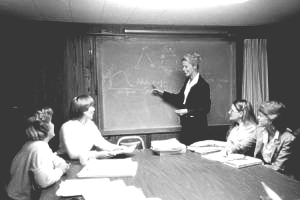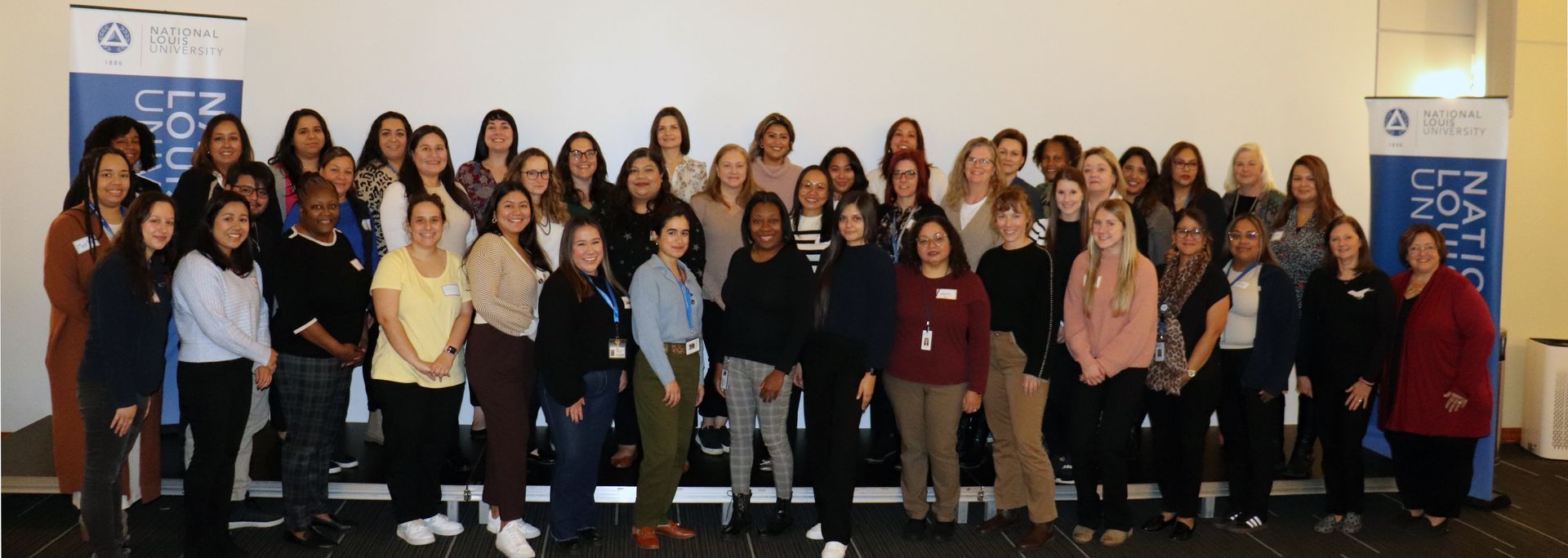
Sim Loh is a family partnership coordinator at Children’s Village, a nationally-accredited Keystone 4 STARS early learning and school-age enrichment program in Philadelphia, Pennsylvania, serving about 350 children. She supports children and families, including non-English speaking families of immigrant status, by ensuring equitable access to education, health, employment, and legal information and resources on a day-to-day basis. She is a member of the Children First Racial Equity Early Childhood Education Provider Council, a community member representative of Philadelphia School District Multilingual Advisory Council, and a board member of Historic Philadelphia.
Sim explains, “I ensure families know their rights and educate them on ways to speak up for themselves and request for interpretation/translation services. I share families’ stories and experiences with legislators and decision-makers so that their needs are understood. Attending Leadership Connections will help me strengthen and grow my skills in all domains by interacting with and hearing from experienced leaders in different positions. With newly acquired skills, I seek to learn about the systems level while paying close attention to the accessibility and barriers of different systems and resources and their impacts on young children and their families.”
This document may be printed, photocopied, and disseminated freely with attribution. All content is the property of the McCormick Center for Early Childhood Leadership.
Essentials are items or attributes absolutely necessary or extremely important to your needs and goals. What are essentials for you? Car keys? Cream in your morning coffee? An umbrella for a rainy day? Time at the gym after work? Essential things have significant impact.
Leadership essentials create positive impact in your program. What qualities motivate and engage staff? How will you respond to a difficult email when someone’s feelings are on the line? How can you mediate a disagreement or resolve a conflict?
When a situation is complex and requires more than a few lines or a decision is at stake, it is always better to meet in person or chat by phone. If video conferencing is an option, that’s a perfect way to establish a connection and brainstorm solutions. When someone’s feelings are on the line, it’s always better to pick up the phone and have a conversation. What you say can be clarified, revised, or explained; whereas, what is written may not come across as intended. Personal communication provides important cues to what is really going on.
With a priority on saving time and responding quickly, you may be tempted to write instead of call. It will pay off to consider the best means of responding. An email works to clarify plans, restate mutual decisions, or share information. When it comes to solving problems, personal connections work best. Successful outcomes are dependent on your ability to inspire growth, cooperation, and commitment in others.
Leadership essentials cultivate a healthy and productive program. Staff feel safe, understand their value, and work toward shared goals. Traits for effective leadership include self-efficacy, empathy, creativity, authenticity, humility, transparency, adaptability, and ongoing learning. These qualities are strengthened through tools of communication, team-building, awareness of self and others, cultural competence, ethical conduct, intentionality, the ability to motivate others, and a deep knowledge of the profession. Essentials are the foundation blocks for effective leadership practice. This kind of skilled leadership is critical to high-quality practices for child development and early learning.
Making leadership essentials a priority will move you forward to new milestones in your leadership journey. The following action steps will help you apply leadership essentials in practical ways.
- Determine your strengths. What areas of your work are a snap and feel enjoyable? List your “snaps” and the reasons you feel good about this area of your work.
- Identify at least one challenge. What is it about this situation that is complex? How will applying a leadership essential make a difference?
- Create a weekly action step. Purposeful action steps move you from thinking mode to action mode and impact your professional growth. “Today, I will read one chapter of the leadership book I bought a month ago.” “Today, I will connect with a staff member to strengthen our relationship.” “Today, I will practice empathy (or another leadership essential) in my relationships with families.”
- Post the leadership essentials. Establish leadership essentials as anchors for your program norms and practices. Invite staff to share their thoughts about these important ingredients of success. Explore the whole leadership framework as a way to clarify your goals, communicate the importance of your work, and help your staff understand their influential contribution to your program.
- Find a mentor and be a mentor. Identify a professional colleague with traits you admire. Make a phone call and ask, “May I have coffee with you? I would like to ask about your work.” Set a regular meeting time to learn how they strengthen their work with leadership essentials. Offer to be a mentor to share your strengths with others.
Dream big! Check out new resources for growth at the McCormick Center for Early Childhood Leadership. Today is a great time to give yourself the gift of leadership inspiration by participating in Leadership Academies or eLearning experiences. In addition to changing your own life, you will create a more meaningful community of growth for staff, families, and children.
Marie Masterson, PhD, is the Director of Quality Assessment at the McCormick Center for Early Childhood Leadership at National Louis University. She is a national speaker, child behavior expert, researcher, and author of multiple books and articles that address high-quality teaching, early care and education, and parenting.
References:
Abel, M., Talan, T., & Masterson, M. (2017). Whole leadership: A framework for early childhood programs. Early Childhood Leadership Exchange, January/February, 22-25.
Committee on the Science of Children Birth to Age 8: Deepening and Broadening the Foundation for Success. (2015). Child Development and Early Learning: A Foundation for Professional Knowledge and Competencies. Washington, D.C.: The National Academies of Sciences, Engineering, and Medicine. Retrieved from: https://www.nap.edu/resource/19401/ProfKnowCompFINAL.pdf






